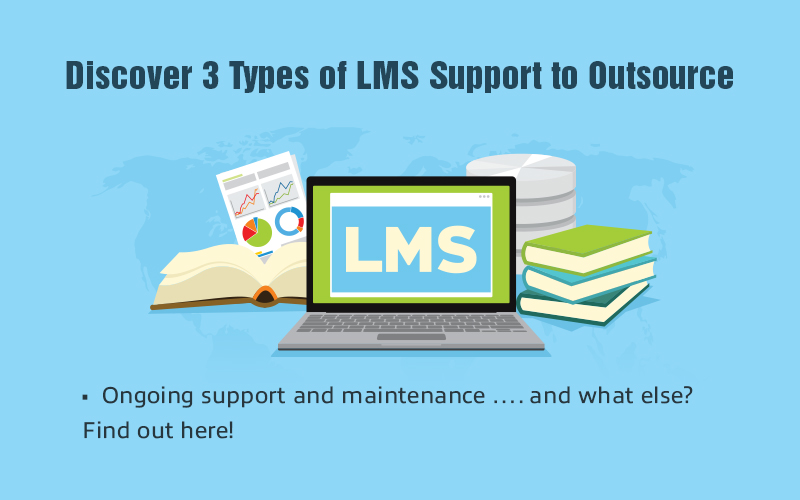Top Two Considerations when Outsourcing L&D Functions
Outsource L&D functions only after taking into consideration these critical factors and deciding what needs to be outsourced.

If you are reading this blog, you are probably contemplating outsourcing your L&D functions. Your decision to outsource is an important one that will directly or indirectly affect your business. Outsourcing is not always the wisest choice, but when it is, it can benefit an organization immensely. I can’t tell you whether it’s the right thing for your company, but I can help you make an informed decision.
There are two considerations that must be factored in when contemplating outsourcing of L&D functions:
- Critical factors
- What needs to be outsourced
1. Critical factors that must be considered
Outsource? But Why?
The important question to ask is, “Why do I want to outsource my L&D functions?” If you are expecting ‘outsourcing’ to provide you with an immediate solution to a very pressing problem, you are barking up the wrong tree. The benefits of a satisfactory outsourcing solution are only perceived over a longer period.
Companies outsource to:
- Achieve better results
- Save money
- Decrease headcount
- Devote time and resources to core functions of the business
The above reasons are valid, but it is the outcome (goal) of outsourcing that is most important. For example, you could outsource a function for a year and save a lot of money, without getting the desired results; this means that your goal is not achieved. What you get back from outsourcing, must be your goal; and you must have clearly set goals before outsourcing. If you don’t lay out your goals right at the very beginning, you are in for a big disappointment down the line.
Is this a short, or a long-term goal?
While deliberating on why you want to outsource, ask is it intended to be a short or long-term goal. Some companies prefer to outsource for a couple of years and then reclaim those functions by bringing them back in-house – which is quite pointless, because of the costs involved. Others outsource for a longer period to save money, time, and glean the benefits of an experienced outsourcing company that include speed, better services, and consistency.
Who controls the outsourced functions?
The decision to outsource also poses the question as to who will control the outsourced functions. It seems logical for the outsourcing vendor to take full control of these functions. Some companies want to concentrate on their core competencies, and therefore are only too willing to let the outsourcing vendor take full control of the outsourced functions.
Others feel obliged to look after their employees and believe that at the end of the day they are still answerable to their employees – no matter if the work is outsourced, and therefore insist on having full control of outsourced functions. There are still others who fear losing control of their department – or worse still – losing their jobs, if their work is outsourced.
Does your company’s culture accept change?
This is tied up with the next critical factor – your company’s culture. Not only should a company’s culture be willing to accept change, but it should also be able to withstand it. A company’s culture can change over time, and this change could be one that encourages outsourcing, even if the previous culture did not.
Some companies might be willing to outsource certain functions, while holding on to ‘critical’ functions. Whatever a company’s situation, it is advisable to communicate the company’s culture to the vendor and seek out one who understands your company’s culture and is willing to work with you without clashing with it.
2. Decide on the L&D functions that must be outsourced
Have a clear idea of the functions you want to outsource. One way of doing this is by first differentiating your core functionalities from the others, and then deciding what you need to outsource. NEVER transfer or delegate your core functions to a third party – doing so could risk these functions being compromised.
L&D (training) functions that are often outsourced include:
- Assessment of skill gaps
- Developing training strategies
- Designing courseware
- Designing curriculums
- Implementing an LMS
- Setting up an LMS
- Managing training content
- Measuring training effectiveness
- Providing learning analytics
- Designing certification courses
- Designing assessment criteria
Companies are often warned never to outsource training that is based on proprietary company information. You can never be sure of how this information will be misused.
Do not outsource functions that are highly volatile and are subject to risk. Outsource functions that the vendor can deliver with accuracy and predictability. Any function that is subject to sudden change/risks must be maintained in-house.
You could outsource all the support functions such as regulatory filing and management of the learning management system, while the training itself is conducted in-house.
Any type of change in a company can have a ripple effect outside of the area of change. Outsourcing part or all your L&D functions will have positive effects in your company if it is done for the right reasons, all the above mentioned critical factors are thought through, and you have a clear idea of what functions you want to outsource.





